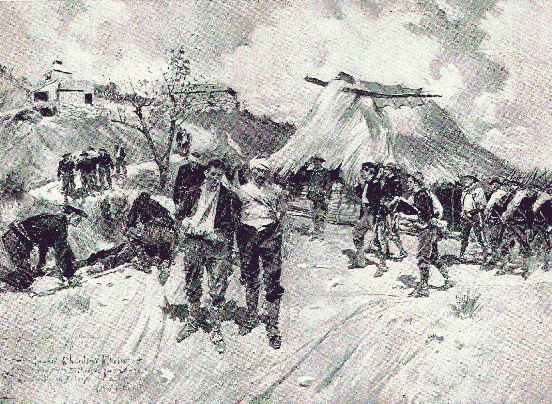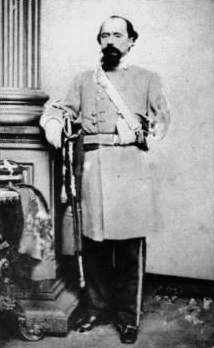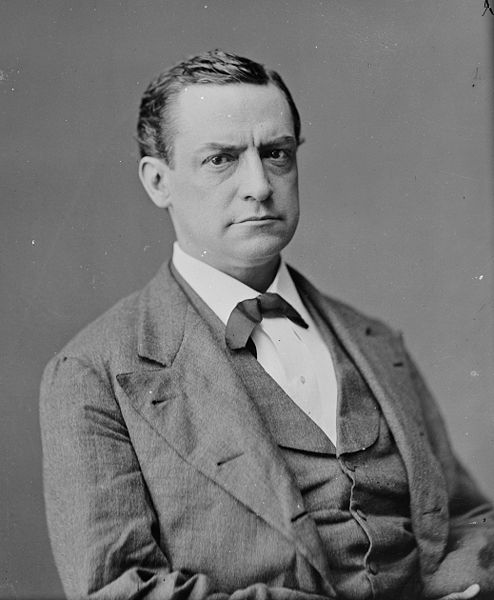Victory Over Spain
Victory Over Spain

Battle of Havana, 1878
The Battle of Havana
The last major engagement of the war was the Battle of Havana. Major General James McPherson started encircling the island’s capital in the middle of May, 1878. American forces were bolstered by thousands of Cuban freedom fighters who, with American victory in sight, flocked to the Stars and Stripes. Havana however was strongly defended. The Spanish believed that if they could bleed the Americans a little longer and let the yellow fever continue to decimate their ranks, the United States would discuss a negotiated peace. For the next three weeks, the U.S. Navy bombarded Havana as McPherson’s forces continued to encircle the city. In what would become common place in later wars, McPherson made excellent use of trenches to protect his forces from the defending Spaniards. Trenches however did not negate the fact that the Americans were making painfully slow progress towards taking the city.
On June 2nd 1878, Lt. Colonel J.E.B. Stuart and his exhausted 1st Volunteer Calvary triumphantly joined the besieging American army. Upon his arrival, Major General Ulysses S. Grant commented to Stuart that it was “a confounded miracle that the North ever won the War of the Rebellion with the South possessing horsemen such as yourself.” Lt. Colonel Custer’s 3rd Calvary arrived at the American camp two days later. It has been reported that Custer was so angry upon learning that Stuart had beat him to Havana that, as one of his subordinates put it, “the good Colonel nearly ripped his long hair out in disgust.”
The finally assault on the city began the morning of June 21, 1878. American forces launched a withering four hour artillery barrage on the city’s defenses before ordering a full frontal assault. The Spanish forces put up fierce resistance but were steadily pushed back into the city in what proved to be a determined urban defense.
A few hours into the battle, in a move that has often been criticized by military historians, General McPherson ordered Stuart’s cavalry regiment to exploit a gap in the Spanish defenses and rush into the center of the city. Stuart made surprising good progress until he reached Havana’s Plaza de la Catedral in the center of the city where the 1st Volunteer Cavalry came under heavy fire. Amongst the gunfire, J.E.B. Stuart was mortally wounded when a Spanish bullet pierced his lower abdomen. Stuart was then dragged into the nearby Catedral de San Cristobal, which housed the mortal remains of Christopher Columbus, where the remnants of his cavalry regiment had taken refuge.
Upon seeing smoke rise from the center of the city, Custer, whose 3rd Calvary had been kept in reserve during the battle, led his regiment without orders into the embattled city. Although Custer would later state that he did this because he “could sense that American lives were in peril,” it is more likely that he charged into Havana against orders because he believed that the battle would soon be won and the chance to win glory would be over. Regardless, the 3rd Calvary did reach the hard pressed survivors of Stuart’s regiment. Custer led his men in a dismounted charge through the Plaza, shooting his way into the besieged Catedral de San Cristobal. It what now has become a famous exchange, Custer upon seeing the dying J.E.B. Stuart doffed his hat and said “ Sir, I have arrived!” to which the ailing Stuart replied “ Yes, but as always, I was here first.” Both men laughed at the absurdity of situation after which Custer, with the assistance from one of his troopers, a 19 year old corporal from New York named Theodore Roosevelt, carried Stuart to the top of the Cathedral where together they unfurled the first American flag to fly over the city.
These two daring, if not reckless, cavalry charges into the city center proved too much for the Spaniards who officially surrendered later that day. Interestingly, amongst the captured Spanish was an American named William W. Loring from North Carolina. Loring had served as a colonel in the Union army before fighting for the Confederate Army as a general during the Civil War. Following the South’s defeat, Loring was even briefly employed as a military advisor by the Ottoman Sultan, before Turkish financial constraints made Loring seek employment with the Spanish government. Despite pleas from Loring that he had not “actively participated in the resent hostilities” against American forces he was nonetheless tried and hanged as a traitor ten days later.


William W. Long in the Confederate and Ottoman Armies
The capture of the city was officially celebrated three days later with a massive parade through the city where, as had almost become customary at this point, the Battle Cry of Freedom was sung with the appropriate lyrical changes tailored for the Spanish.
Yes we'll rally round the flag, boys, we'll rally once again,
Shouting the battle cry of freedom,
We will rally from the Southland, we'll gather from the North,
Shouting the battle cry of freedom!
(Chorus)
The Union forever! Hurrah, boys, hurrah!
Down with the tyrants, and up with the stars;
While we rally round the flag, boys, rally once again,
Shouting the battle cry of freedom!
We are springing to the call with a million freemen more,
Shouting the battle cry of freedom!
And we'll fill our vacant ranks of our brothers gone before,
Shouting the battle cry of freedom!
Chorus
We will welcome to our numbers the loyal, true and brave,
Shouting the battle cry of freedom!
And although he may be poor, not a man shall be a slave,
Shouting the battle cry of freedom!
Chorus
So we're springing to the call from the East and from the West,
Shouting the battle cry of freedom!
And we'll hurl the evil crew from the land we love best,
Shouting the battle cry of freedom!
Chorus
The Treaty of Amsterdam (1878)
With the fall of Havana coming a week after the capture of Puerto Rico it became clear that the war was over. Still, it took over a month before the final peace treaty was signed in the Netherlands. The Treaty of Amsterdam was official signed on July 25, 1878. Its stipulations were simple; Cuba, Puerto Rico, and the rest of Spain’s West Indian possessions were to be ceded to the United States without compensation. Although some of the American delegates pressed for the annexation of some of Spain’s Pacific territories, the lack of American activity in the Pacific during the war undermined this claimed.
Effects of the War
The Spanish-American War had a large affect on both nations. For the United States, it was a major step in healing the wounds of the Civil War as Southerners and Northerners both fought valiantly against a foreign enemy. The United States also greatly increased its Caribbean holdings which now included Cuba, Santo Domingo, Puerto Rico, and a few other minor islands. The United States would also soon undergo several military reforms in light of lessons learned from the war. This victory though had not come cheap. The war, although lasting less than 11 months, cost the Americans 1,352 men killed and many more wounded or wrecked by disease.
Spain however, suffered much worse, losing an estimated 7,800 men killed and wounded. Furthermore having lost the the last remnants of their New World empire, the ruling military junta was overthrown and Spain was plunged yet again into civil war.
In the end, the Spanish-American War marked an important turning point in American history. For the first time, the United States had soundly beat a European Power and proved to the world that it was a force to be reckoned with.

Last edited:
